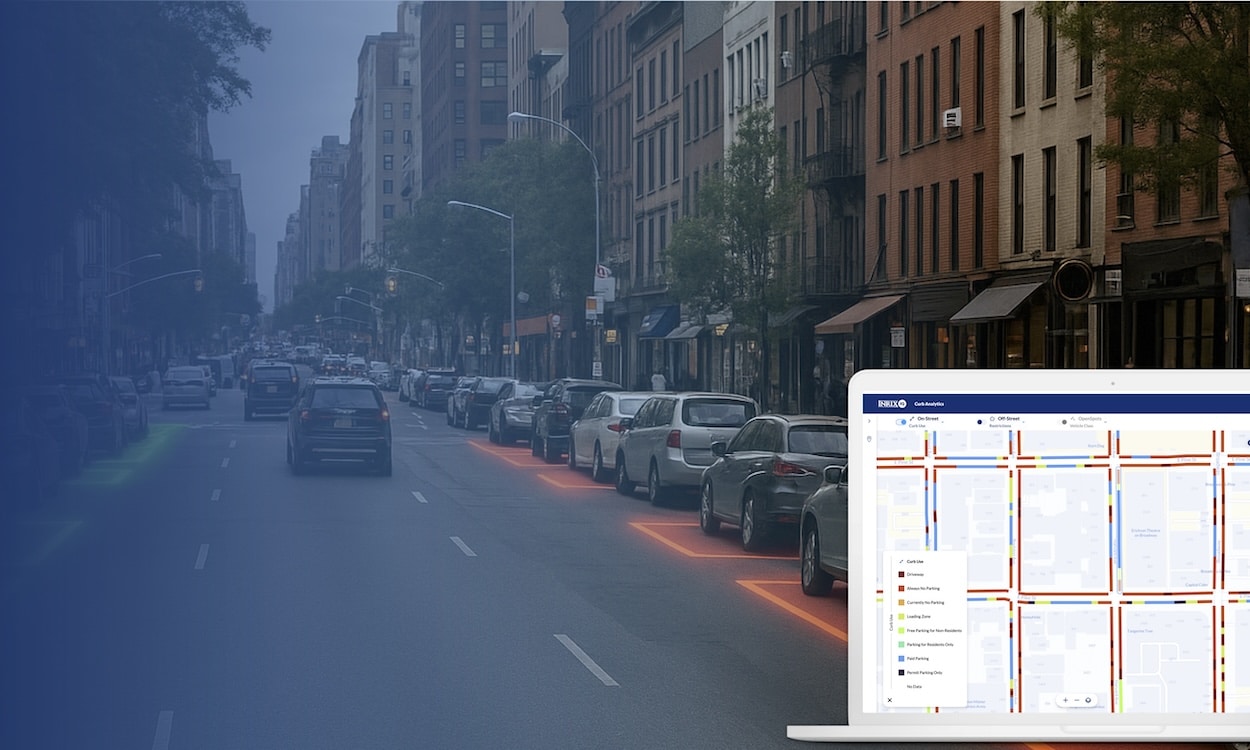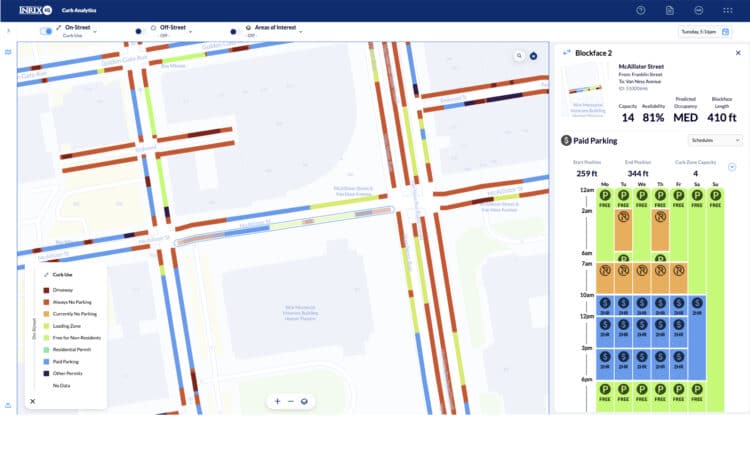
Cities have long lacked a scalable, data-driven way to understand how full or empty curbspace is throughout the day. Traditional approaches—like field studies, sensor installations, or transaction-based estimates—are costly, limited in coverage, and often outdated by the time they’re collected.
This lack of citywide insight makes it difficult for transportation professionals to proactively manage parking demand, optimize curb policies, and support broader mobility goals.
That’s why we just launched our On-Street Occupancy Prediction feature in INRIX Curb Analytics that gives curb management staff insight into how full each curb segment is—hour by hour, day by day—across an entire city.
This launch marks a major step forward in giving transportation professionals scalable, dynamic parking insights without relying on costly sensors or static field studies while also working outside of paid areas and without being dependent on driver compliance with payments within those areas and/or errors created by people who leave early from paid parking sessions.
How Does Our On-Street Occupancy Predictive Model Work?
On-Street Occupancy Predictions estimate curbside parking demand by time of day and day of week. Unlike traditional approaches that rely on payment transaction data, sensors, or cameras, INRIX’s predictions are powered by its own floating car data from millions of connected vehicles, land use patterns, and historical parking behavior.
Curb Analytics insights are based on :parking data generated by more than a trillion connected vehicle events. The quality of INRIX data is validated by regularly collecting ground truth through random sampling of blocks and lots in the cities we cover.
This makes it possible to understand how full a street segment is likely to be—even in areas without sensors, or paid parking.

A Smarter Way to Manage Curbspace
City agencies have long struggled to understand parking occupancy at scale. Field studies are expensive and time-bound. Tools based on transaction data only show part of the picture—missing unpaid areas and off-meter behaviors.
INRIX On-Street Occupancy Predictions solve these challenges with a citywide, sensor less, continuously updating feature. Forecasts are refreshed daily and show expected occupancy levels (low, medium, or high) for each curb segment in 15-minute intervals for all days of the week.
What Makes This Different?
- No Sensors Required: Works citywide using INRIX connected vehicle data—no infrastructure needed.
- Covers Paid & Unpaid Zones: Goes beyond transaction data to show occupancy even in areas without meters.
- Updated Daily: Always current, with daily refreshes that reflect real-world traffic and curb use.
- Built for Policy Makers: Designed to support curb management decisions in addition to enhancing turn-by-turn navigation for enterprise and automotive use cases.
Key Use Cases for Public Agencies
Our On-Street Occupancy Predictions help cities:
- Optimize Pricing: Adjust rates dynamically to hit occupancy targets and improve curb turnover.
- Target Enforcement More Effectively: Identify high-demand areas where underpayment and non-compliance are more likely.
- Data Driven Curb Use Policy: Track curb usage by time and day to inform decisions about duration limits, loading zones, or shared mobility pickup/drop-off.
- Eliminate the Need for Field Studies: Replace expensive manual counts with predictive, systemwide insights. Leave your clipboards at home!
Powering Smarter, More Sustainable Curb Policies
Occupancy Predictions also support broader city goals—like reducing vehicle miles traveled (VMT) through reduced circling for parking and boosting economic activity by increasing access for people looking to park in business districts and offices. By seeing occupancy that is up to date, cities can proactively shape policy instead of reacting to complaints or outdated assumptions.
See It Live at NACTO or IPMI
Want a closer look? INRIX will be showcasing On-Street Occupancy Predictions live at the NACTO Designing Cities Conference in Washington, D.C., May 28–31 and at the IPMI Annual Conference in Scottsdale, Arizon June 8-11.
Stop by our booth at either event to explore the tool and see how it can help your city better manage the curb.
Watch On-Demand Webinar to Learn More
Can’t make it to NACTO or IPMI? Watch this free on-demand webinar to learn how cities use parking data and occupancy insights to improve curb management, boost enforcement, and ensure a parking spot is available on every block.
Watch this webinar to learn:
- How On-Street Occupancy Predictions work
- Key use cases and benefits
- Real-world examples of cities using predictive curb insights to optimize policy




